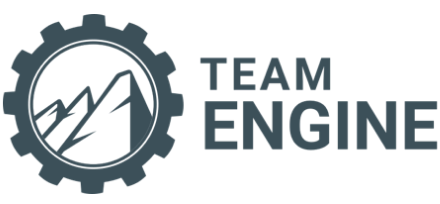
Bonus Program Outline
Steven Cesare, Ph.D.
A business owner from Delaware called me the other day to discuss the evolving nature of his company’s compensation plan. Like many business owners, this executive is continually confronted by increased wage rates, inflationary cost pressures, and thinning profit margins, prompting him to consider non-discretionary bonus programs based on achieving challenging business goals in place of simply meting out the static cost of living increases to his employees each year. Take heed fellow business owners, this is the path you should sincerely consider and substantively adopt sooner rather than later.
Beyond the obligatory conversational foreplay that typically accompanies bonus program discussions, our healthy dialogue quickly addressed company-wide programs defined by vertical goal alignment rather than singular bonus plans aimed solely at mid-level management staff or sales employees. Strategic by nature and capitalistic by design, the seasoned business owner waxed inquisitive about the hierarchy of an integrated bonus system intent on fixating his employees’ attention on common sets of business objectives and related payouts based on achievement.
Circumscribed by company size, scope, and success, here is the common, elementary bonus program outline I recommended to the business owner.
Foreman. This position oversees a full work crew across multiple job sites. The “typical” bonus potential for this position is 10% of the annual salary. Thus, if this position earns $25/hour (i.e., roughly $50,000 annually), the “typical” annual bonus potential would be approximately $5,000 per year. Standard bonus-eligible key performance indicators for this position include: job quality scores, crew member retention, and meeting labor hour goals for their jobs.
Field Supervisors. This position oversees multiple work crews across multiple job sites. The “typical” bonus potential for this position is 15% of the annual salary. For example, if this position has an annual salary of $70,000, the “typical” bonus potential would be approximately $10,500 per year. Standard bonus-eligible key performance indicators for this position include: job quality scores, Foremen retention, job retention, and meeting labor hour goals for their jobs.
Account Managers. This position responds to customer needs by working with Field Supervisors across multiple work crews. The “typical” bonus potential for this position is 15% of the annual salary. For example, if this position has an annual salary of $80,000, the “typical” annual bonus potential would be approximately $12,000. Standard bonus-eligible key performance indicators for this position include: enhancements sales, job retention, and meeting gross margin goals for their entire portfolio.
Department Managers. This position oversees an entire business unit (e.g., Maintenance, Construction, Tree Services, or Irrigation). The “typical” bonus potential for this position is 20% of the annual salary. For example, if this position has an annual salary of $100,000, the “typical” annual bonus potential would be approximately $20,000. Standard bonus-eligible key performance indicators for this position include: enhancements sales, change orders, job retention, Foremen retention, and department gross margin goals.
Branch Managers. This position oversees all field operations for an entire business location (e.g., Maintenance, Construction, Tree Services, and Irrigation). The “typical” bonus potential for this position is 25% of the annual salary. For example, if this position has an annual salary of $120,000, the “typical” annual bonus potential would be approximately $30,000. Standard bonus-eligible key performance indicators for this position include: branch revenue, job retention, Foremen retention, and branch net profit goals.
With reference to bonus programs, here are some key points to remember. Per OSHA, it is illegal to allocate financial bonuses based on injury incident rate. Next, bonus programs must be self-funding, premised on increased production rates, revenue per man metrics, gross margin rates, and accurately estimated jobs. And finally, when in doubt, always make the bonus potential more lucrative to further motivate achievement.
If you have any questions or comments about this topic or anything else related to human resources, Sign Up for Steve’s HR Helpdesk!
Check Out Harvester Steve Cesare’s
NEW OFFERING!
Harvest Group Partners


Click the icon below to download the Harvest Group Mobile app!
What do you want to learn more about?
The Harvesters want to know what topics you would like to see us discuss. Click below to submit your ideas!



